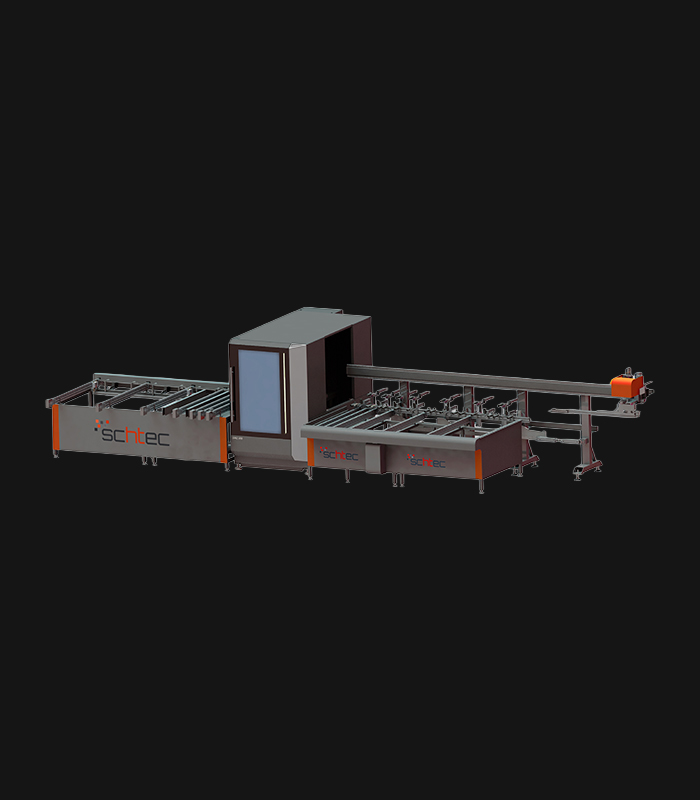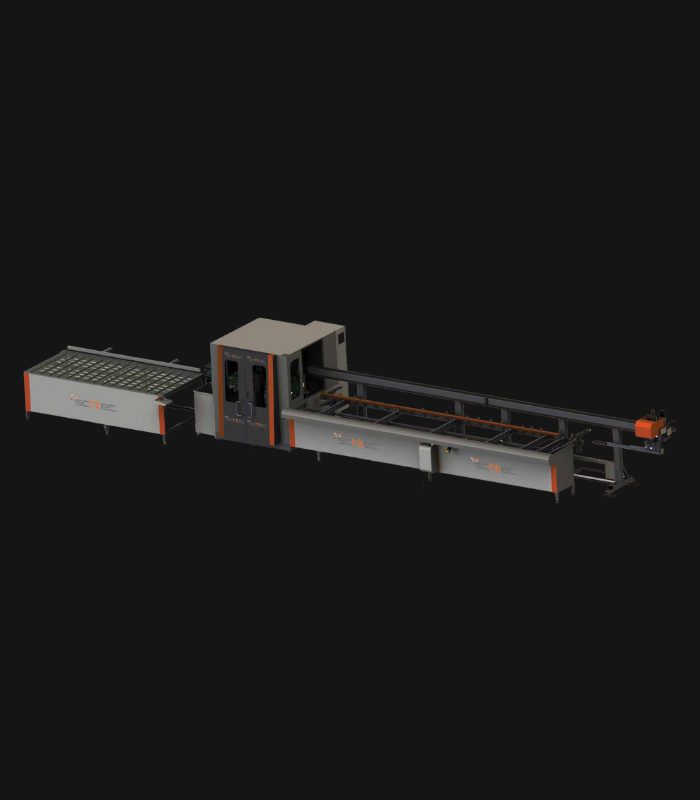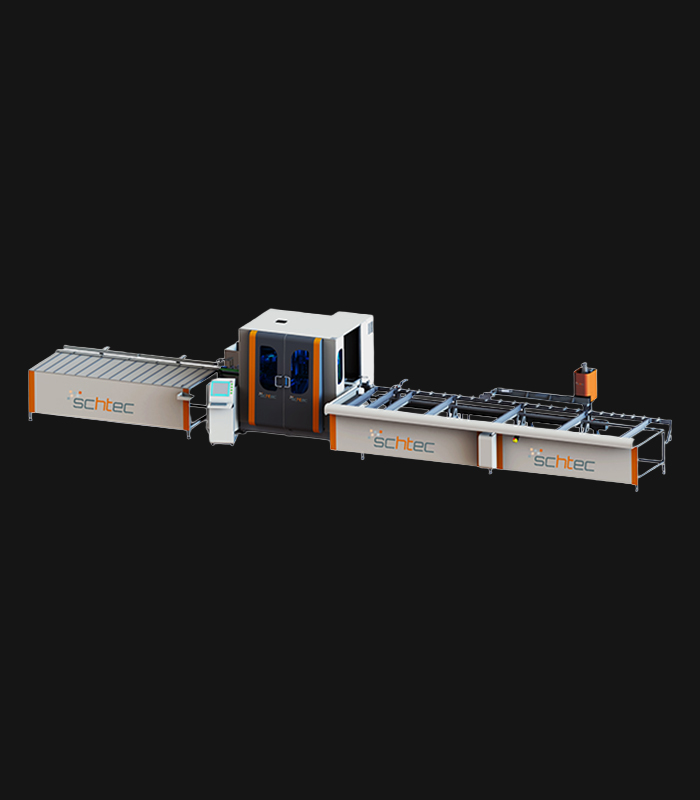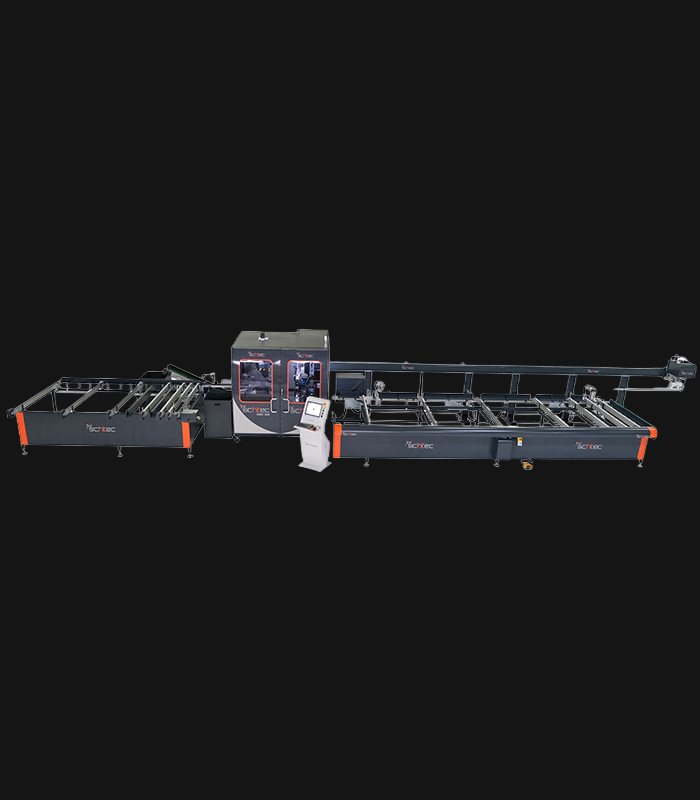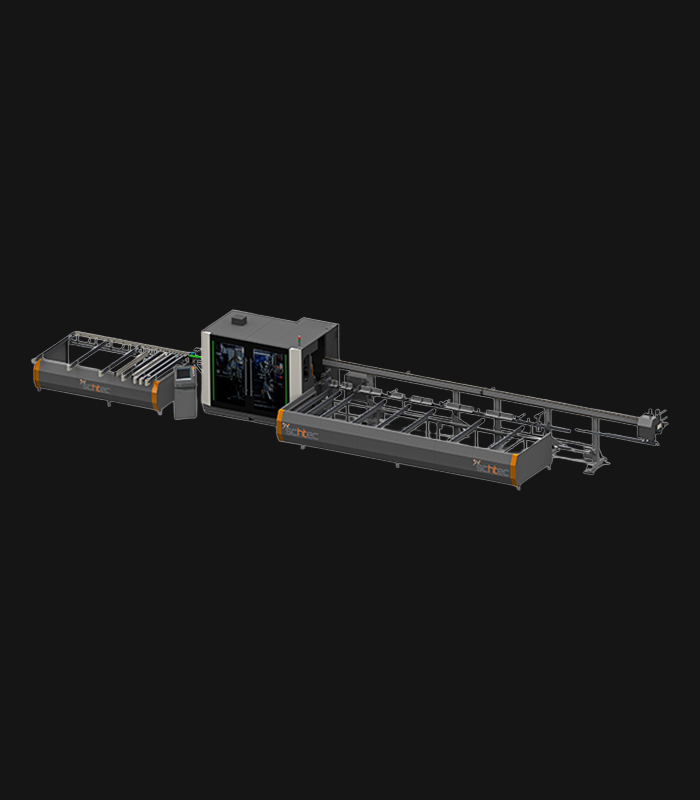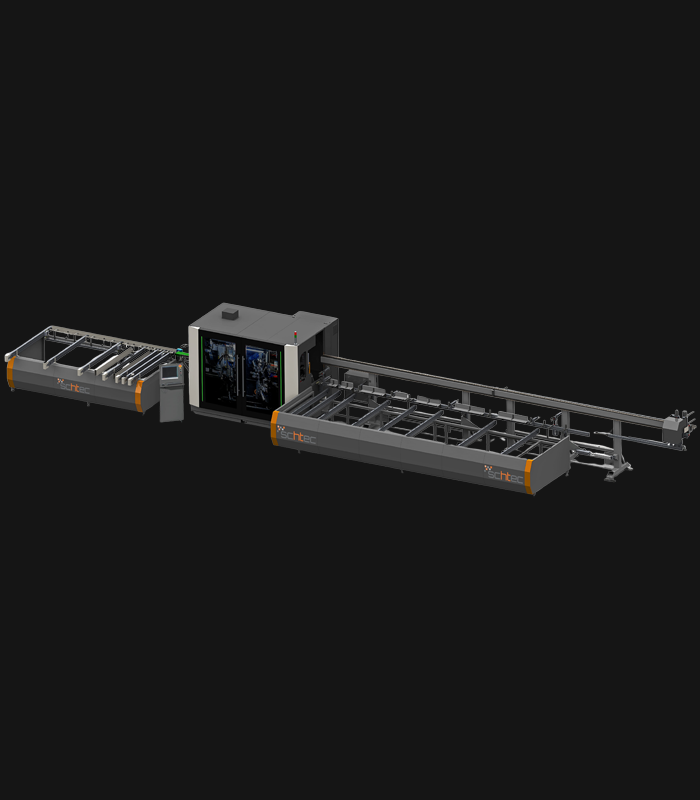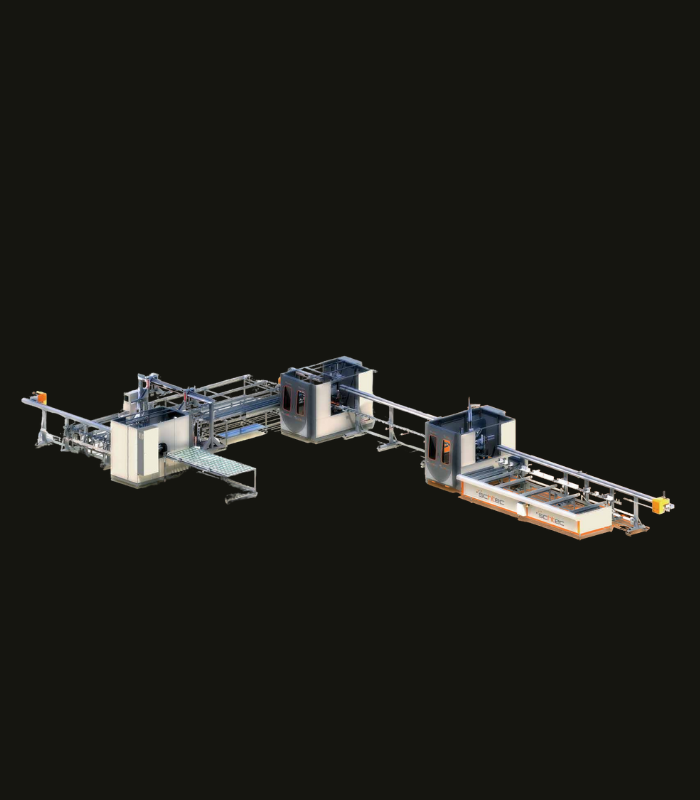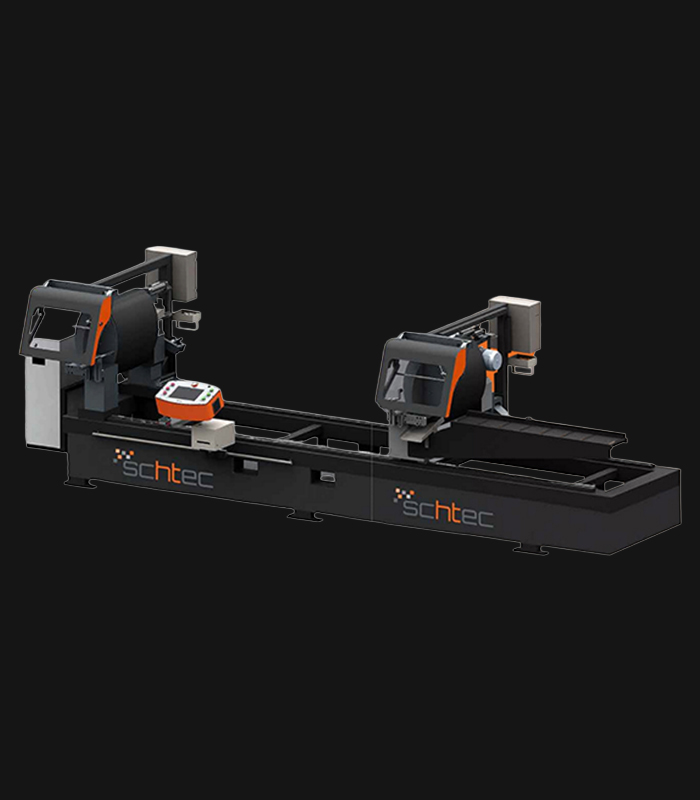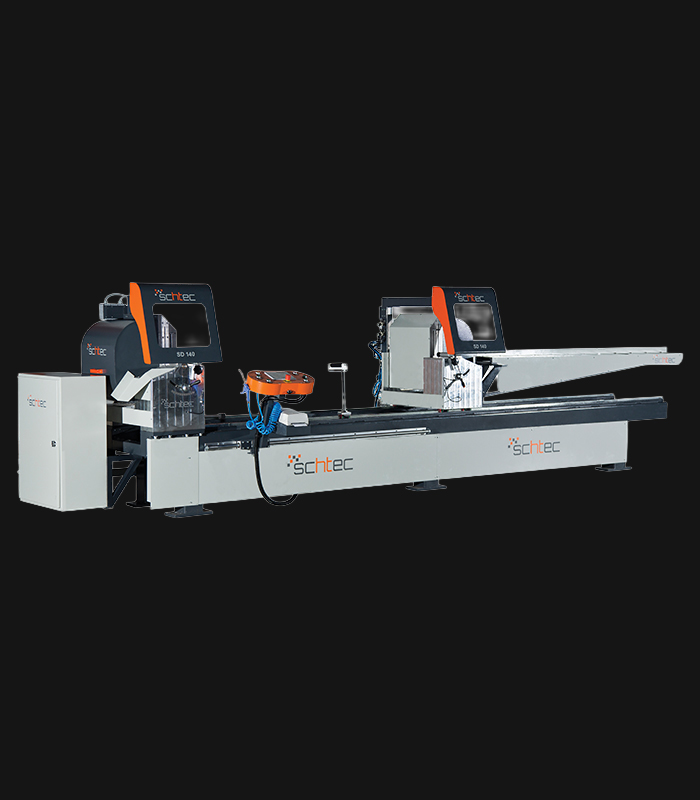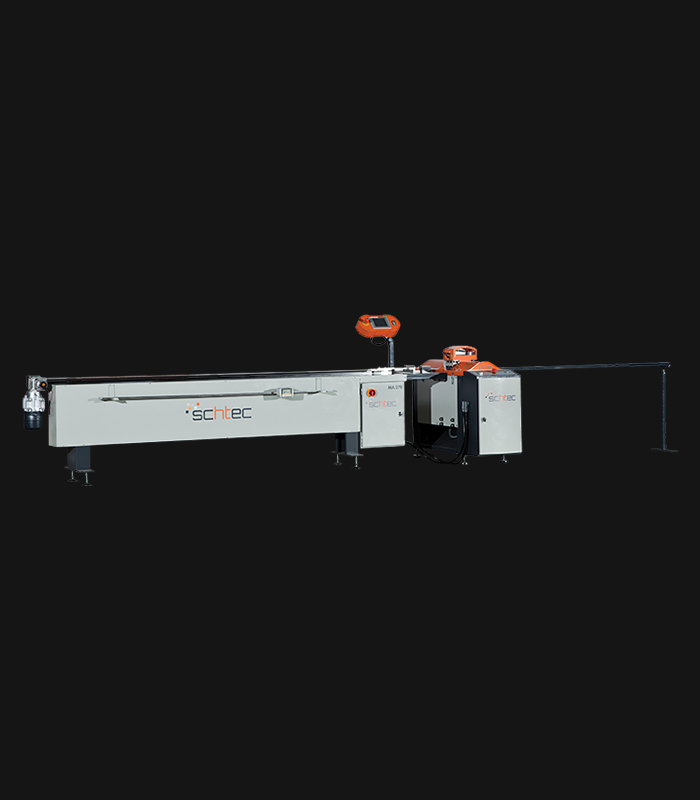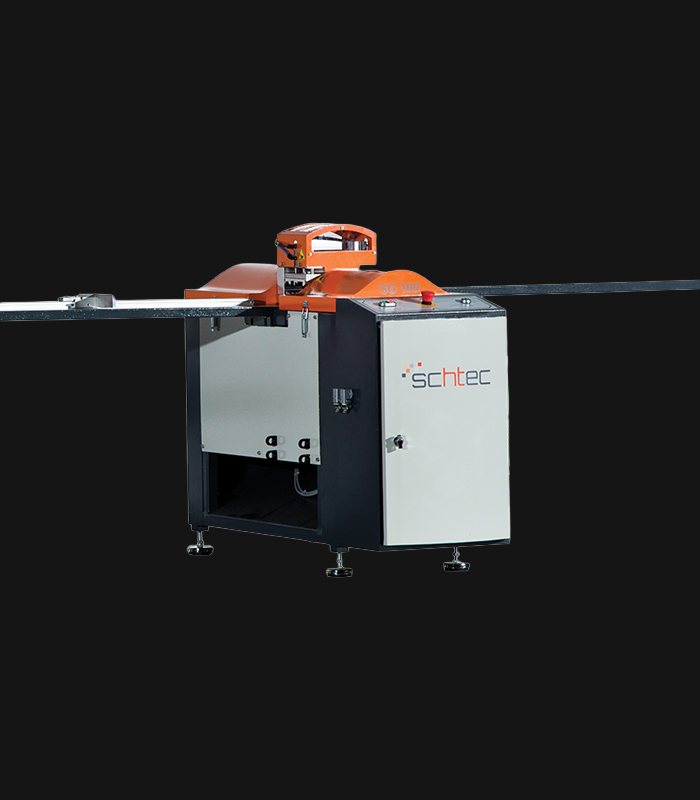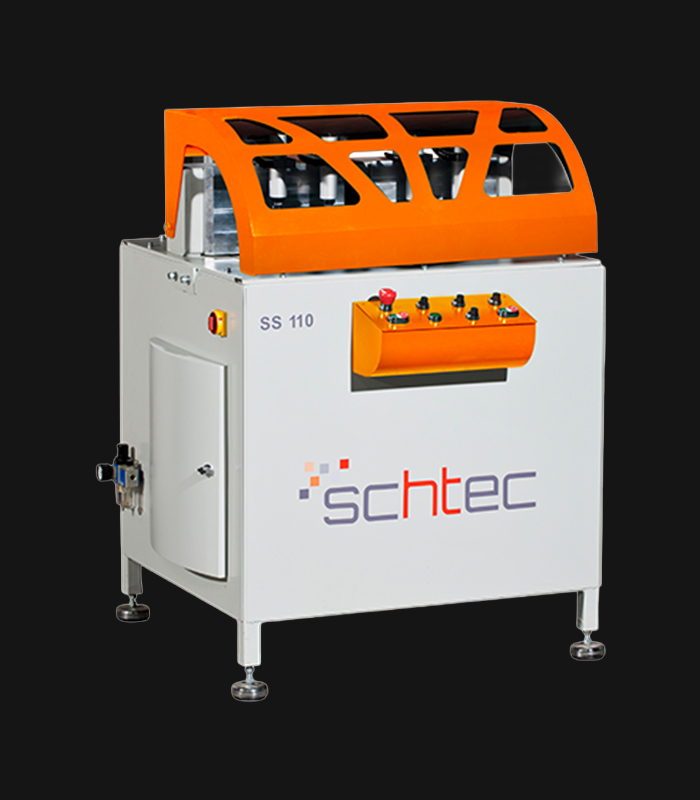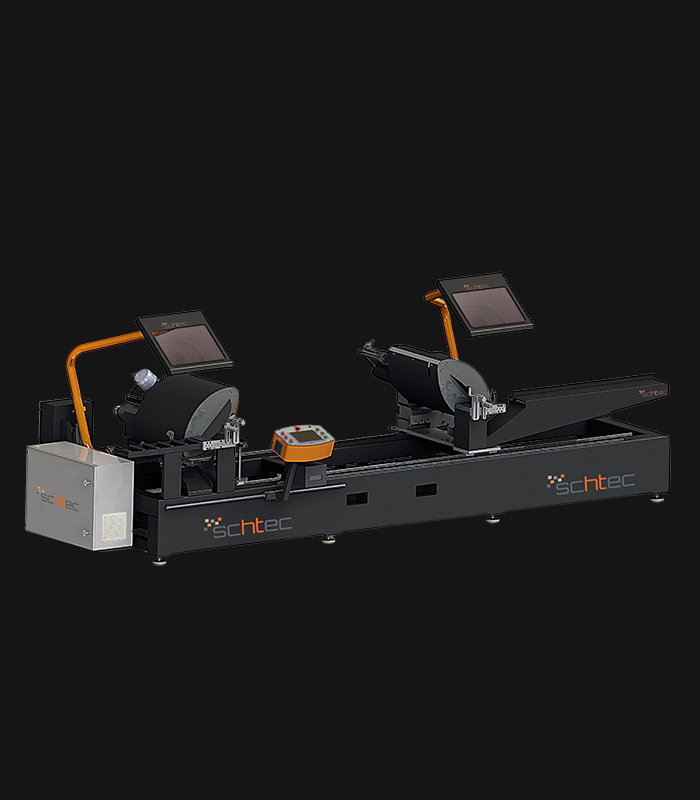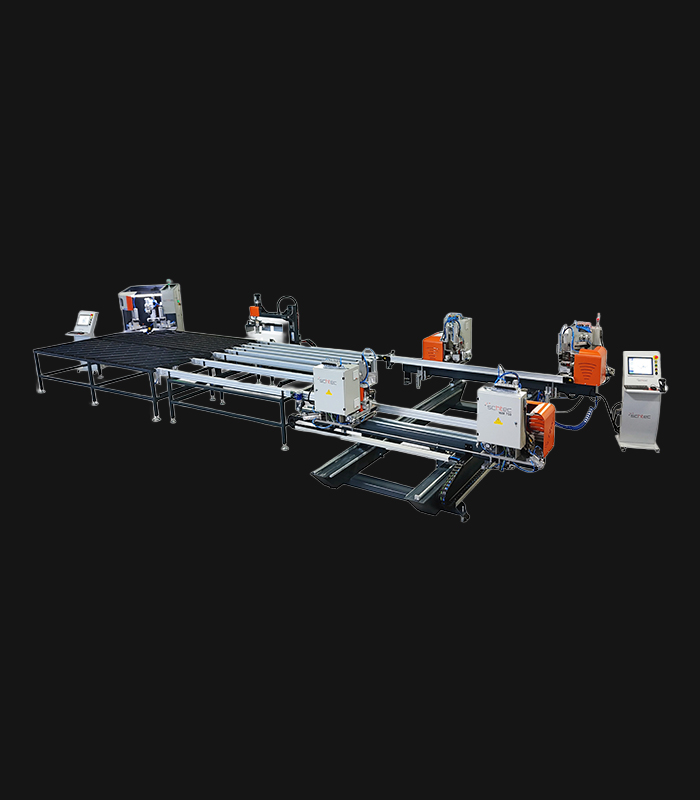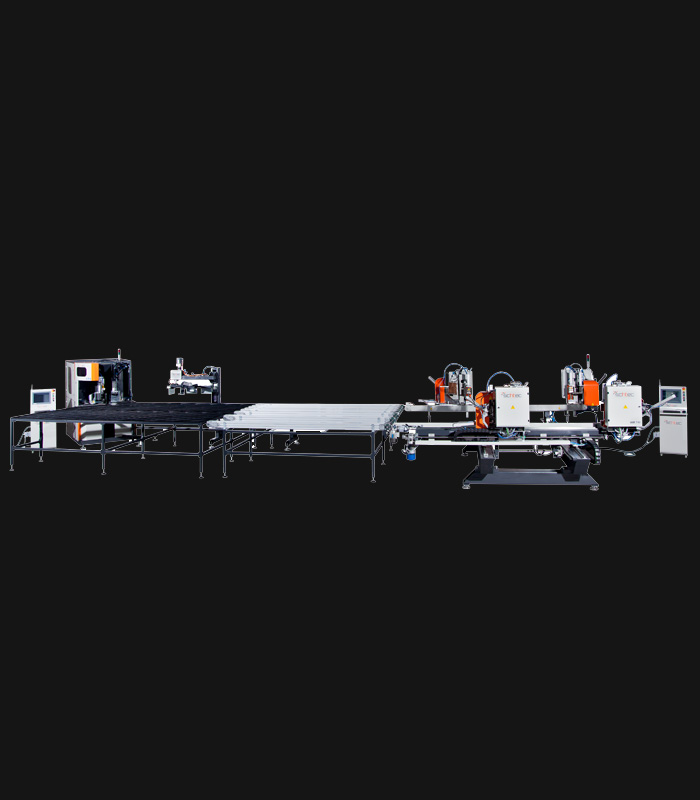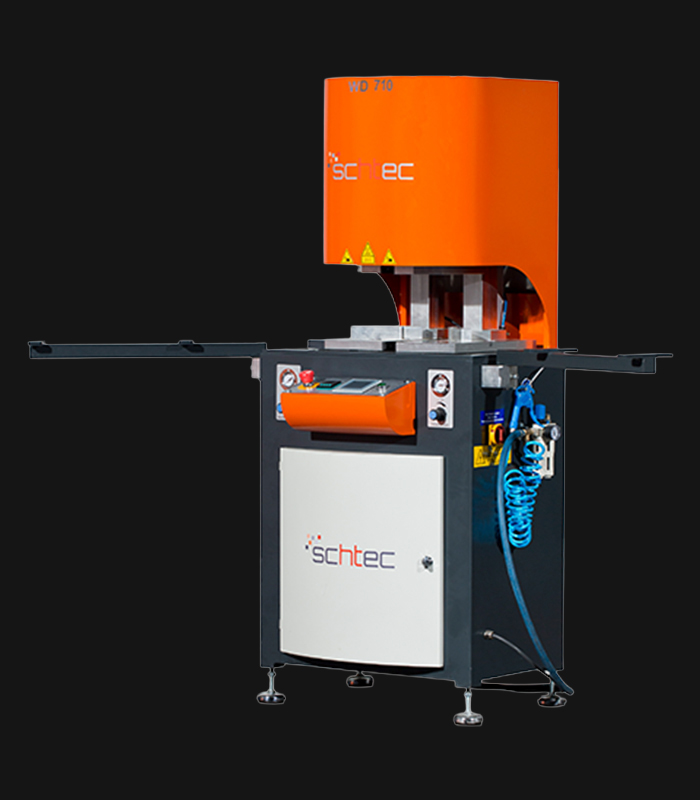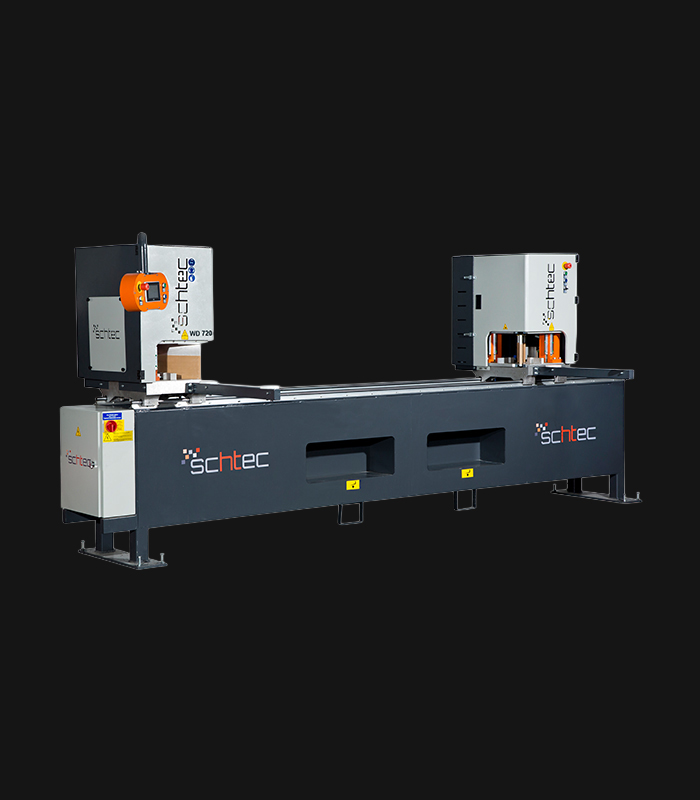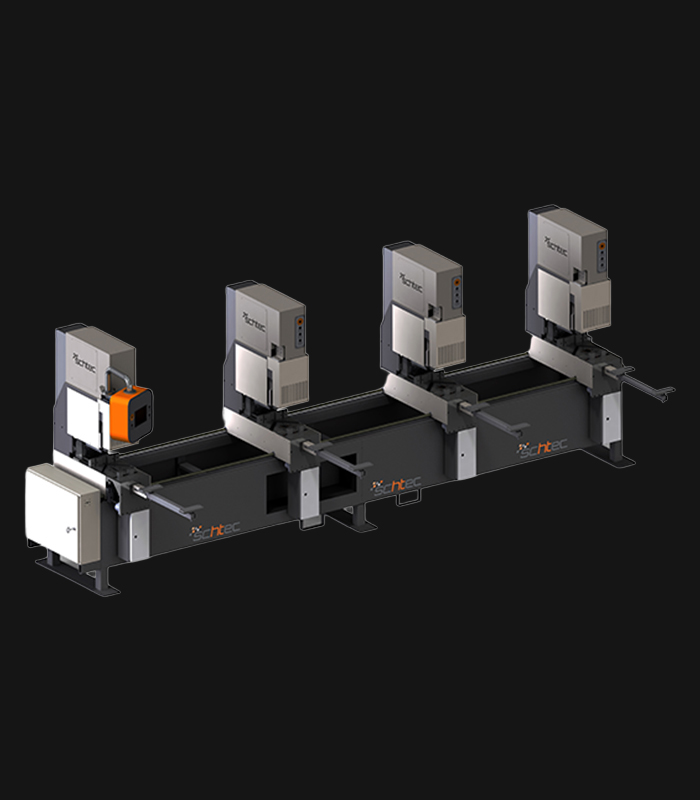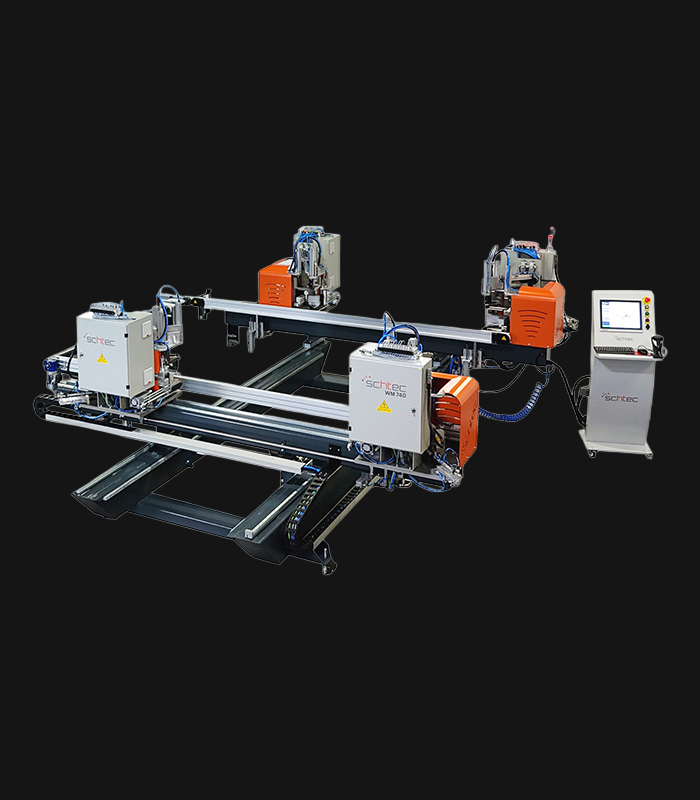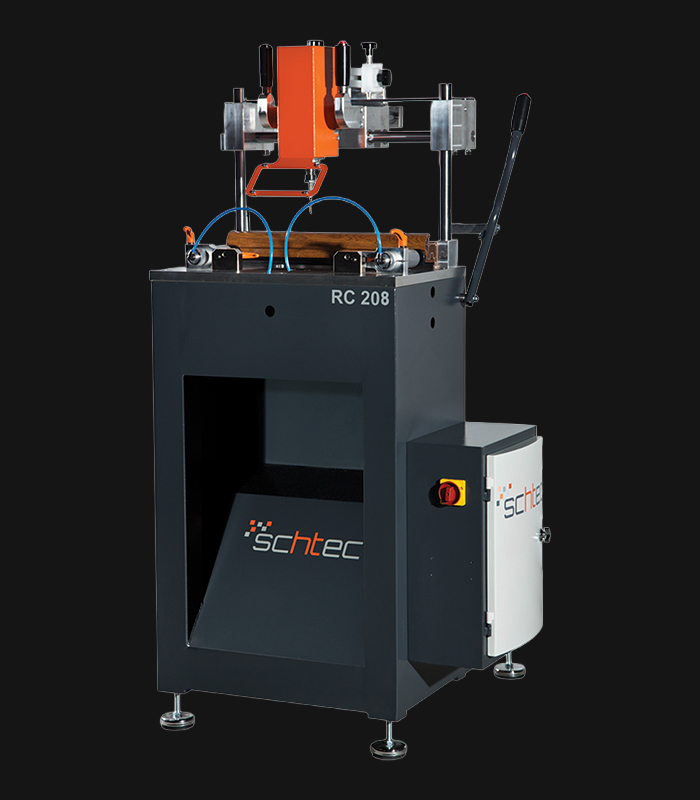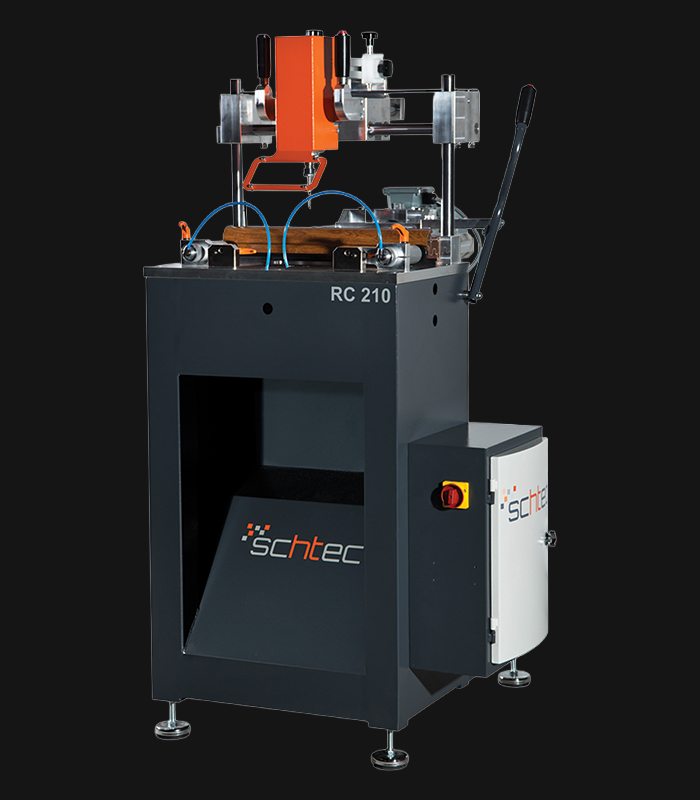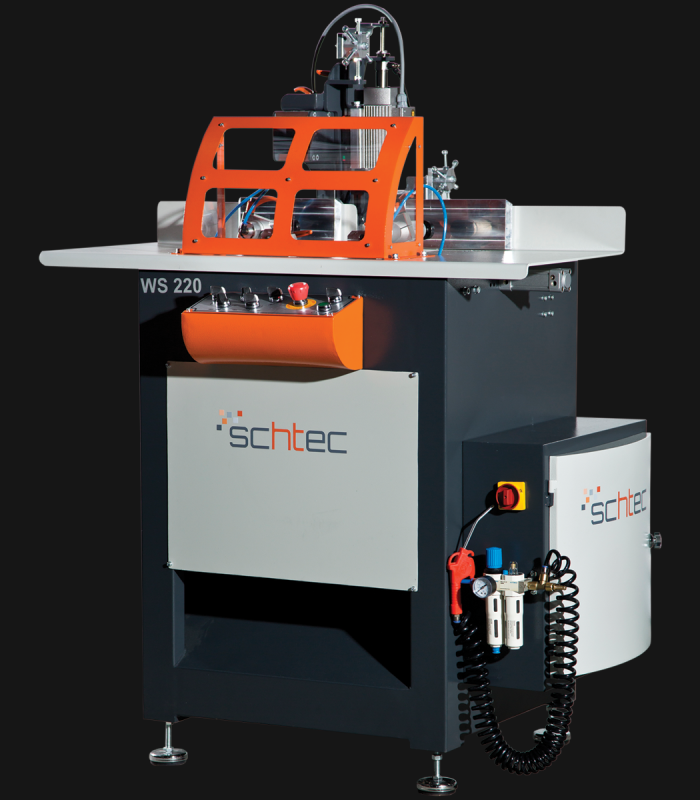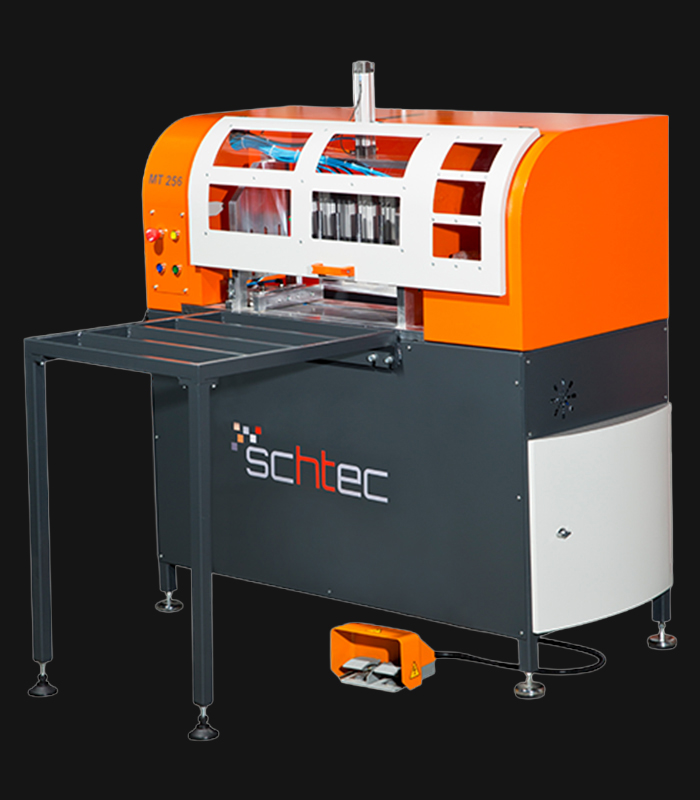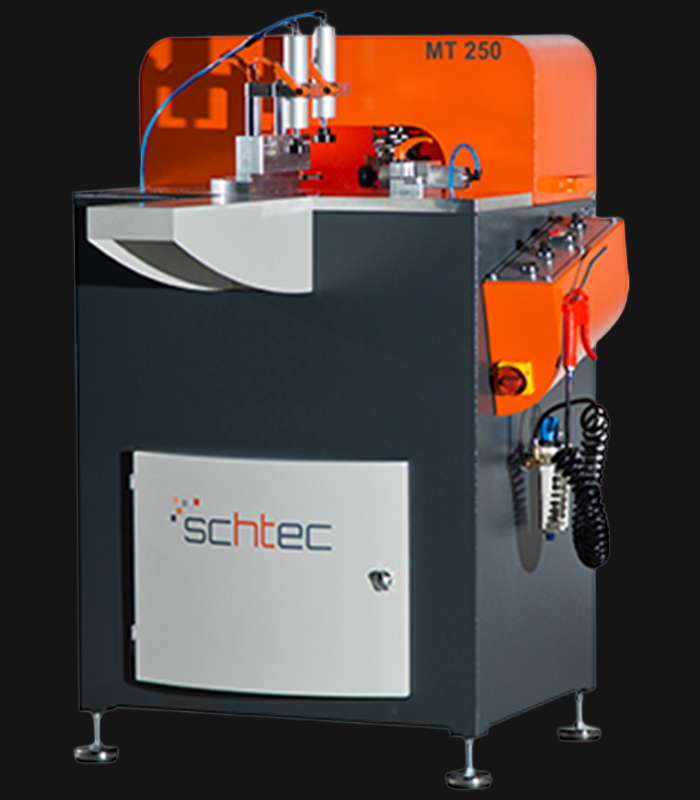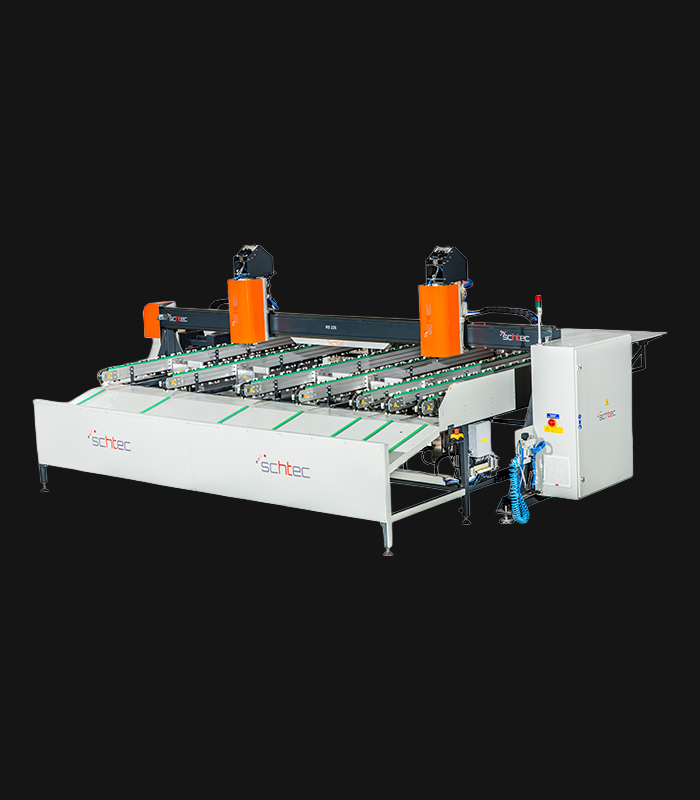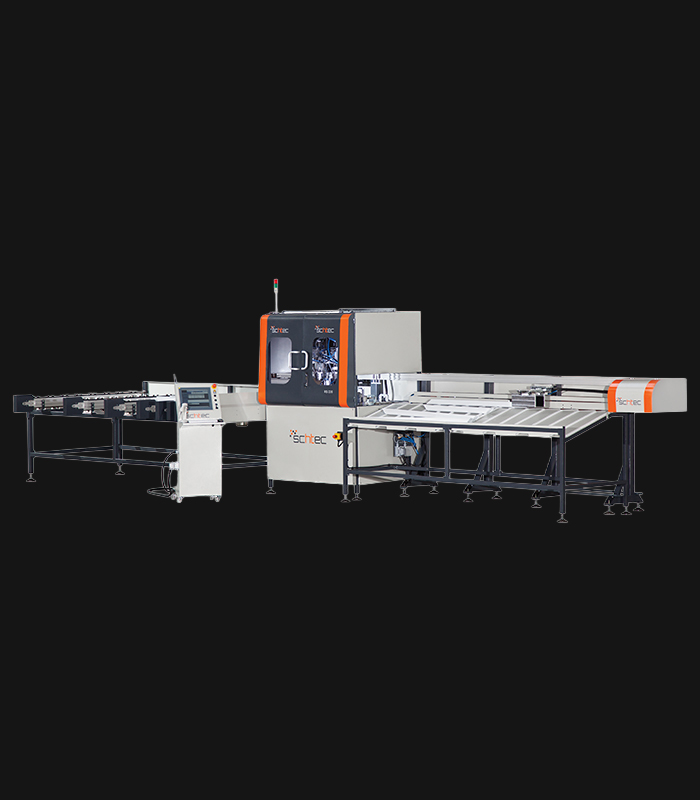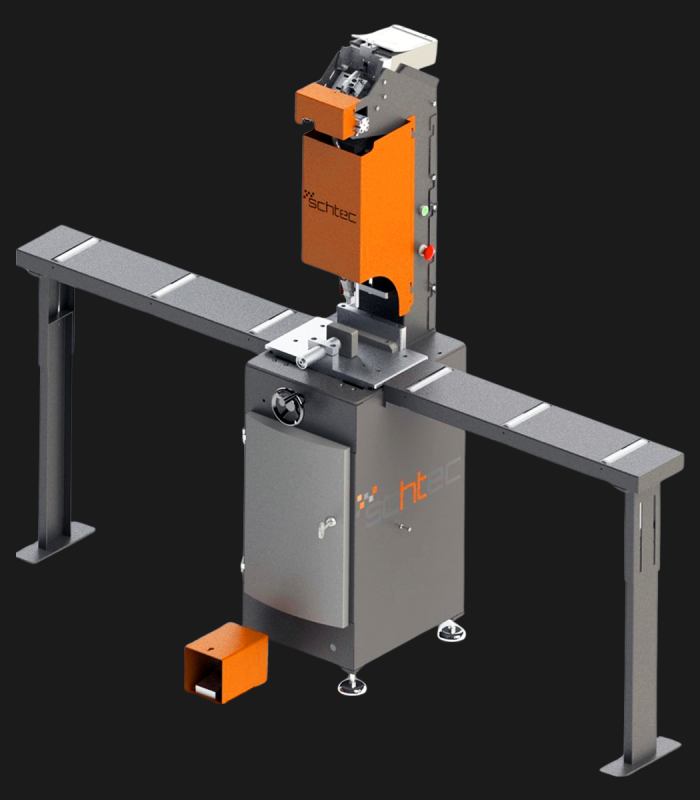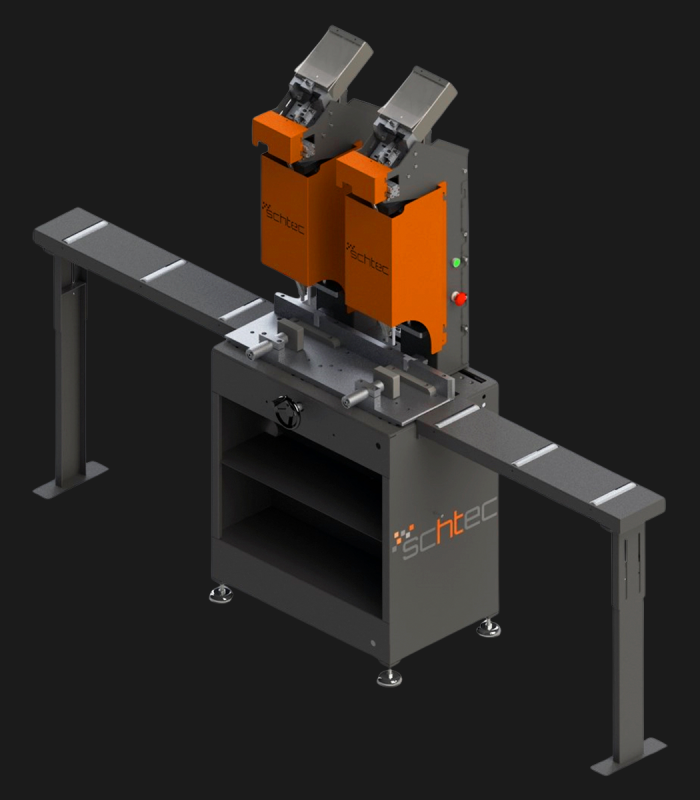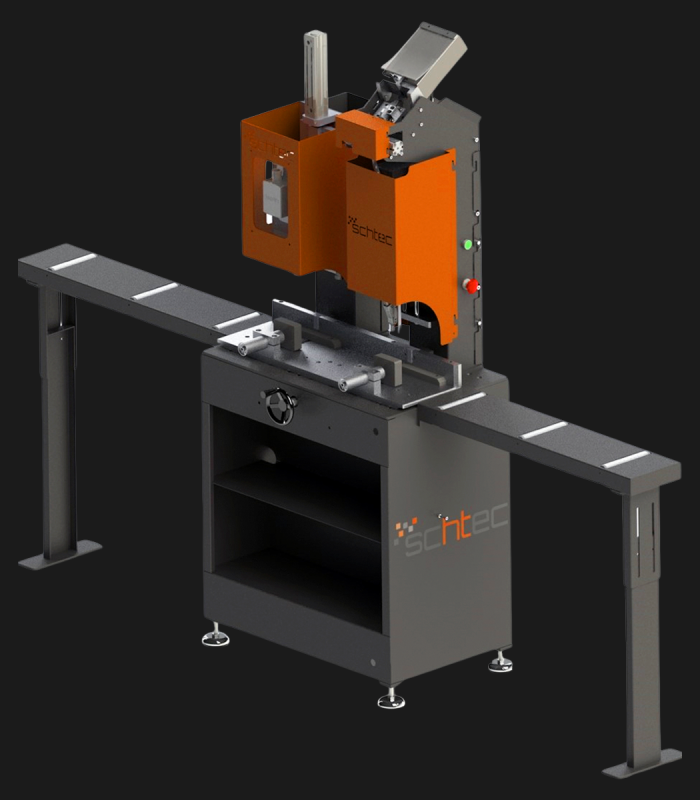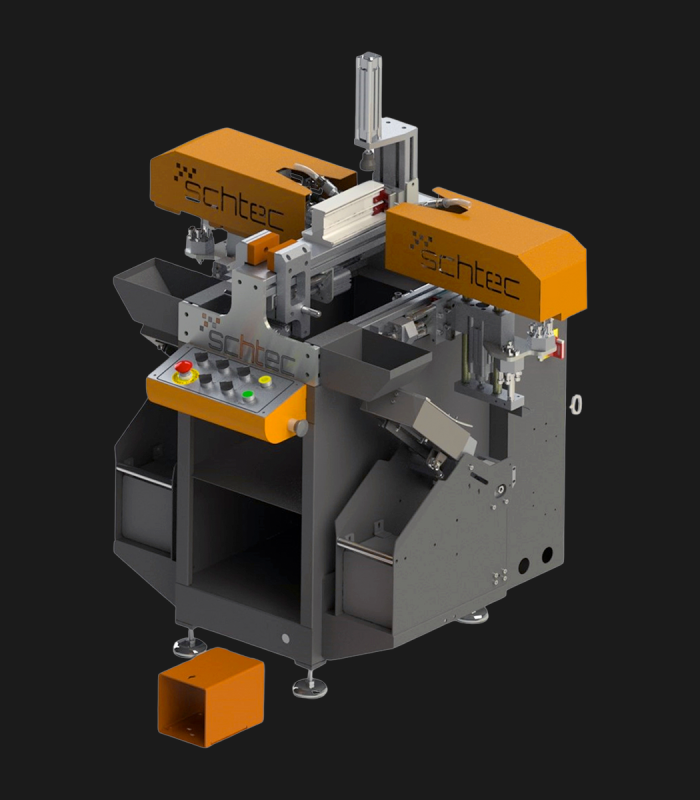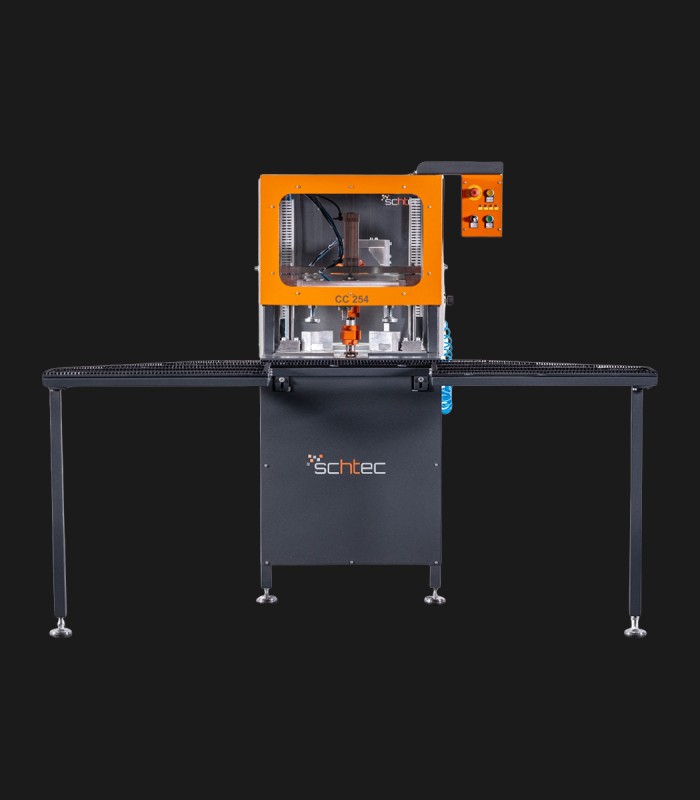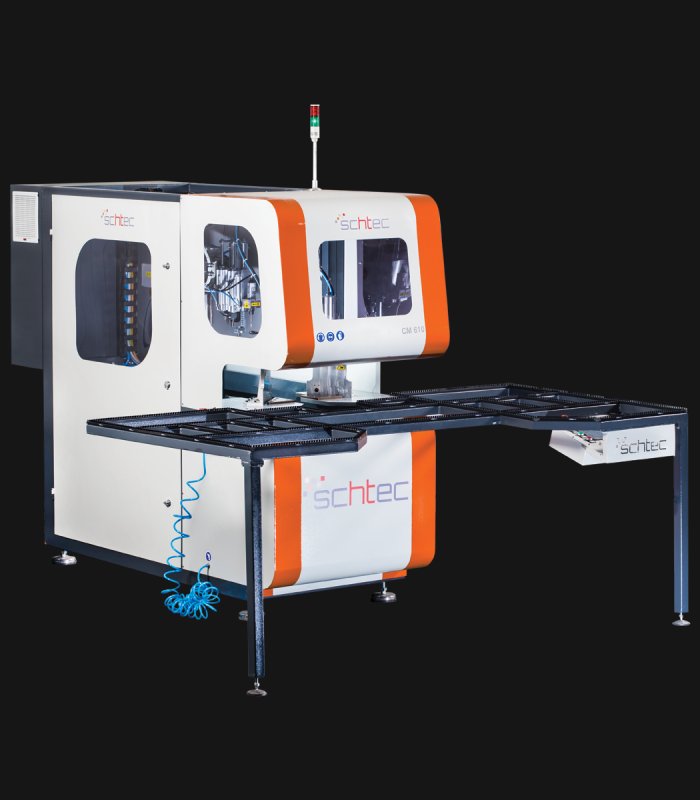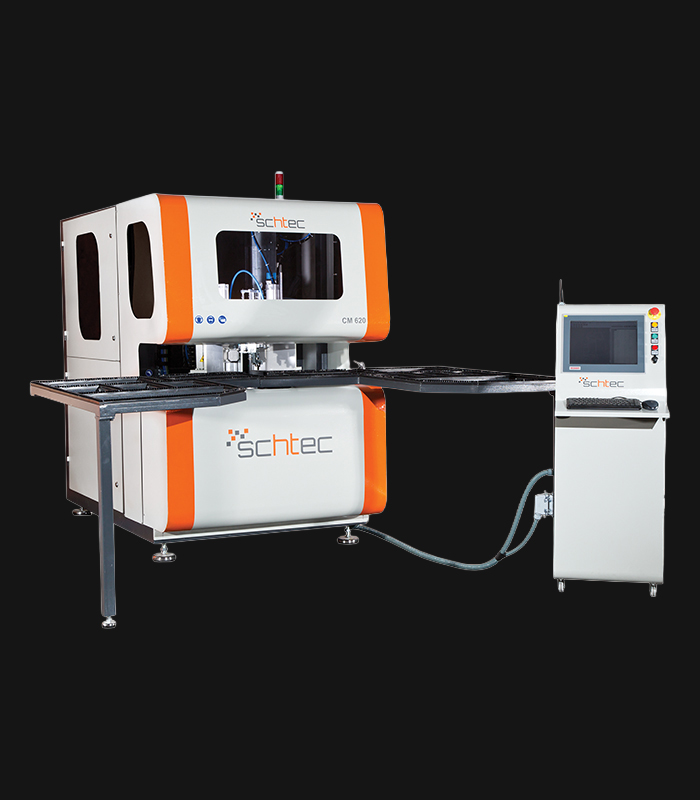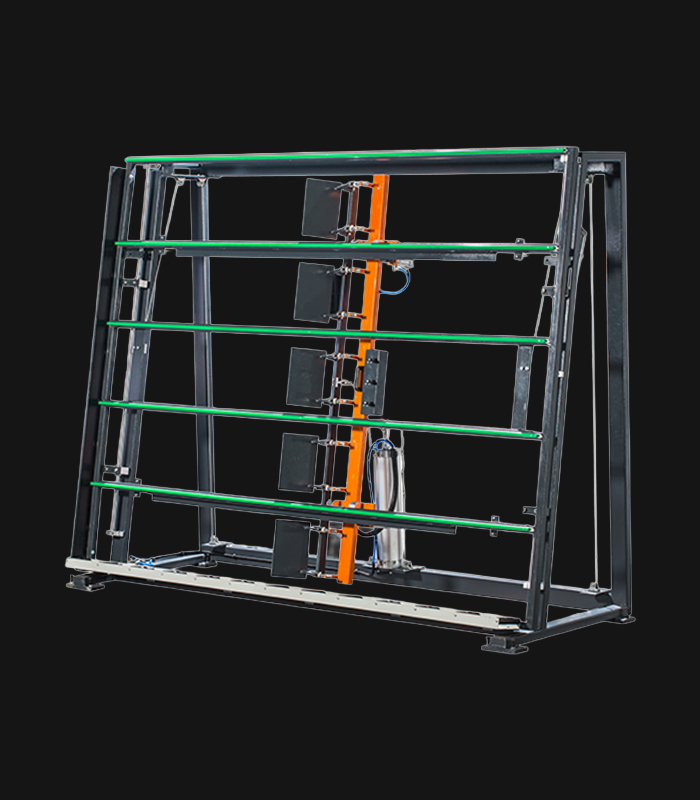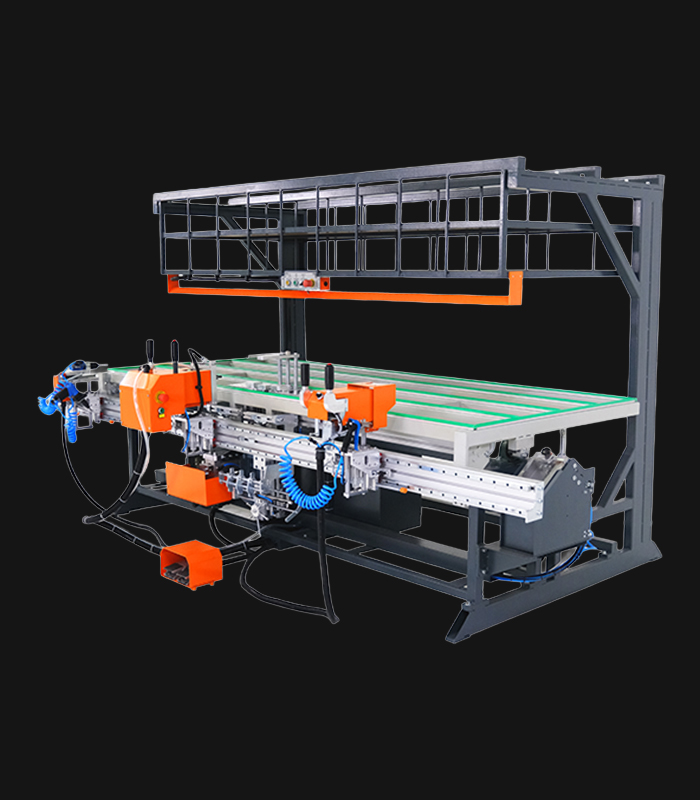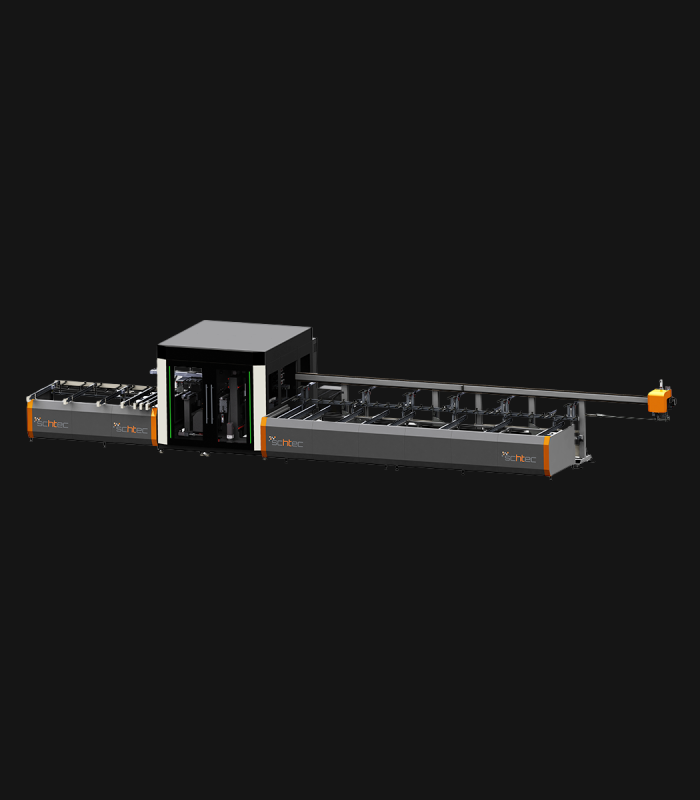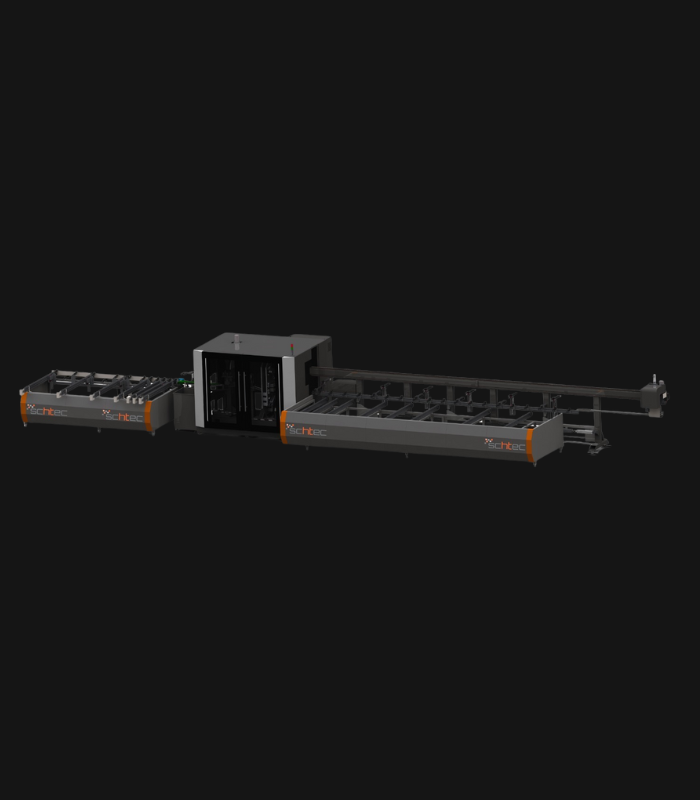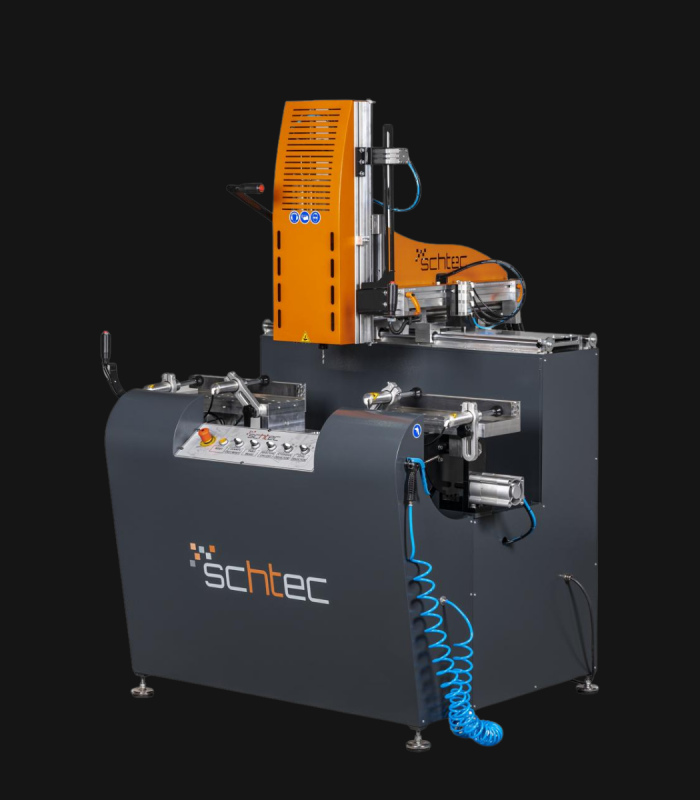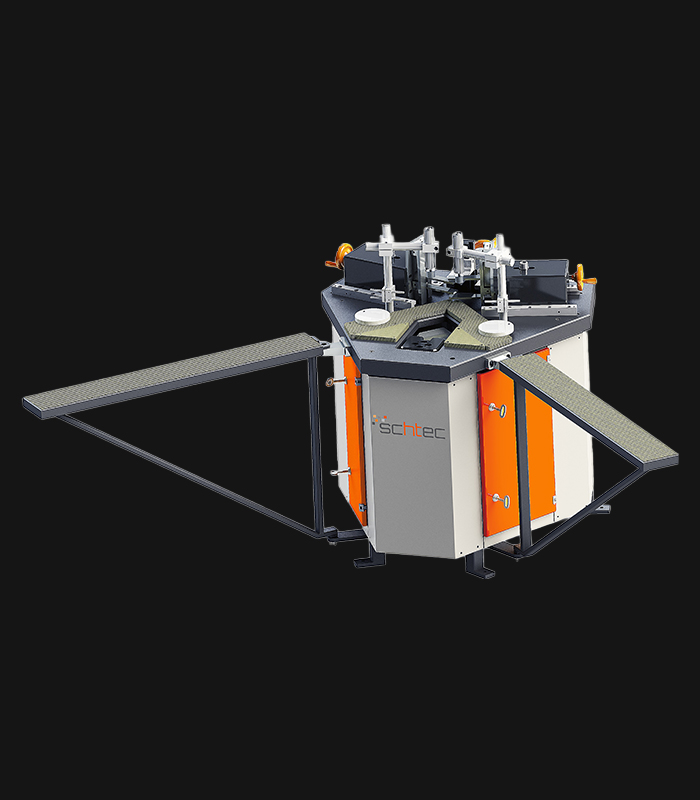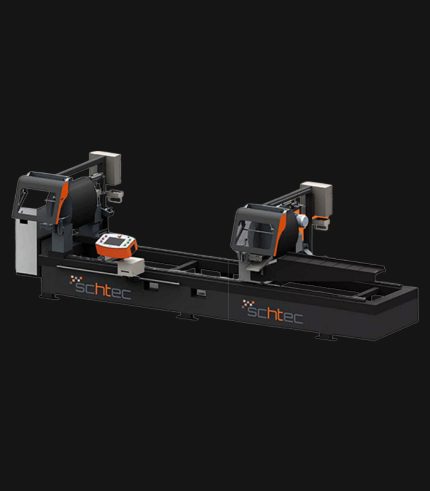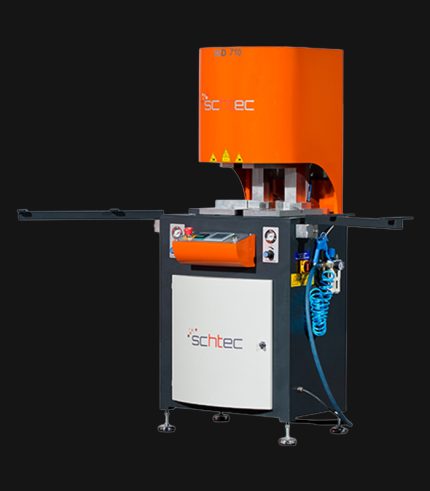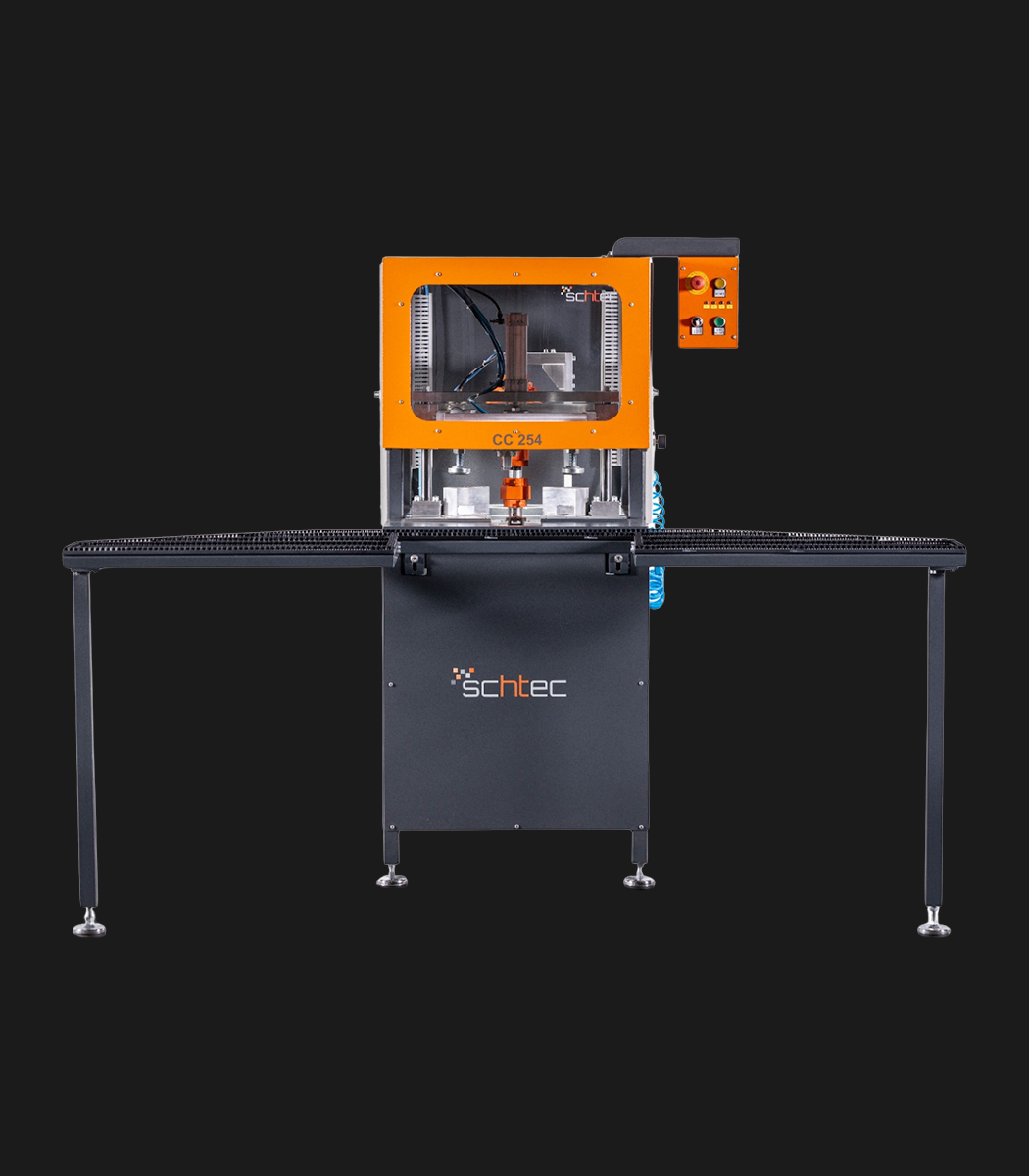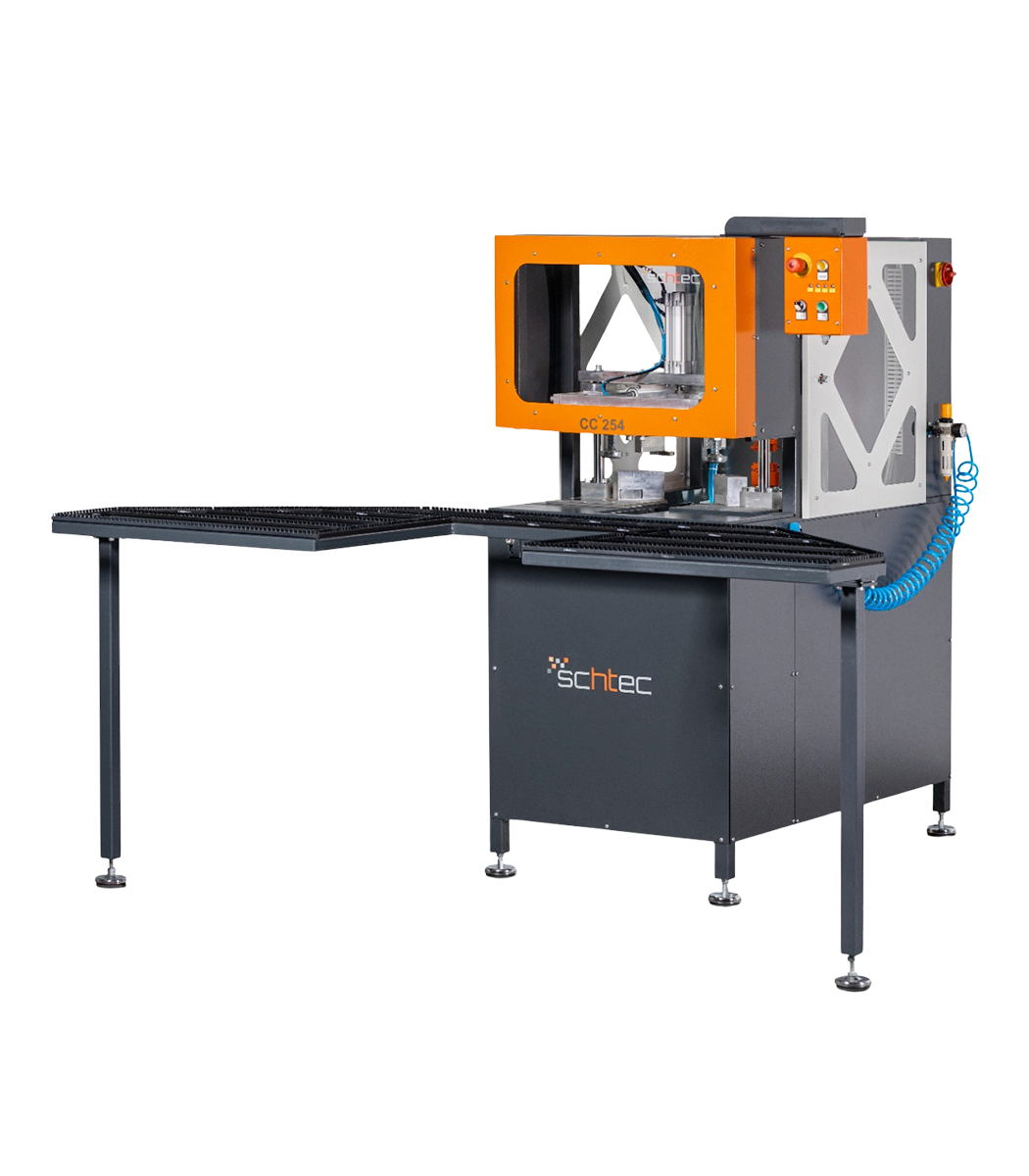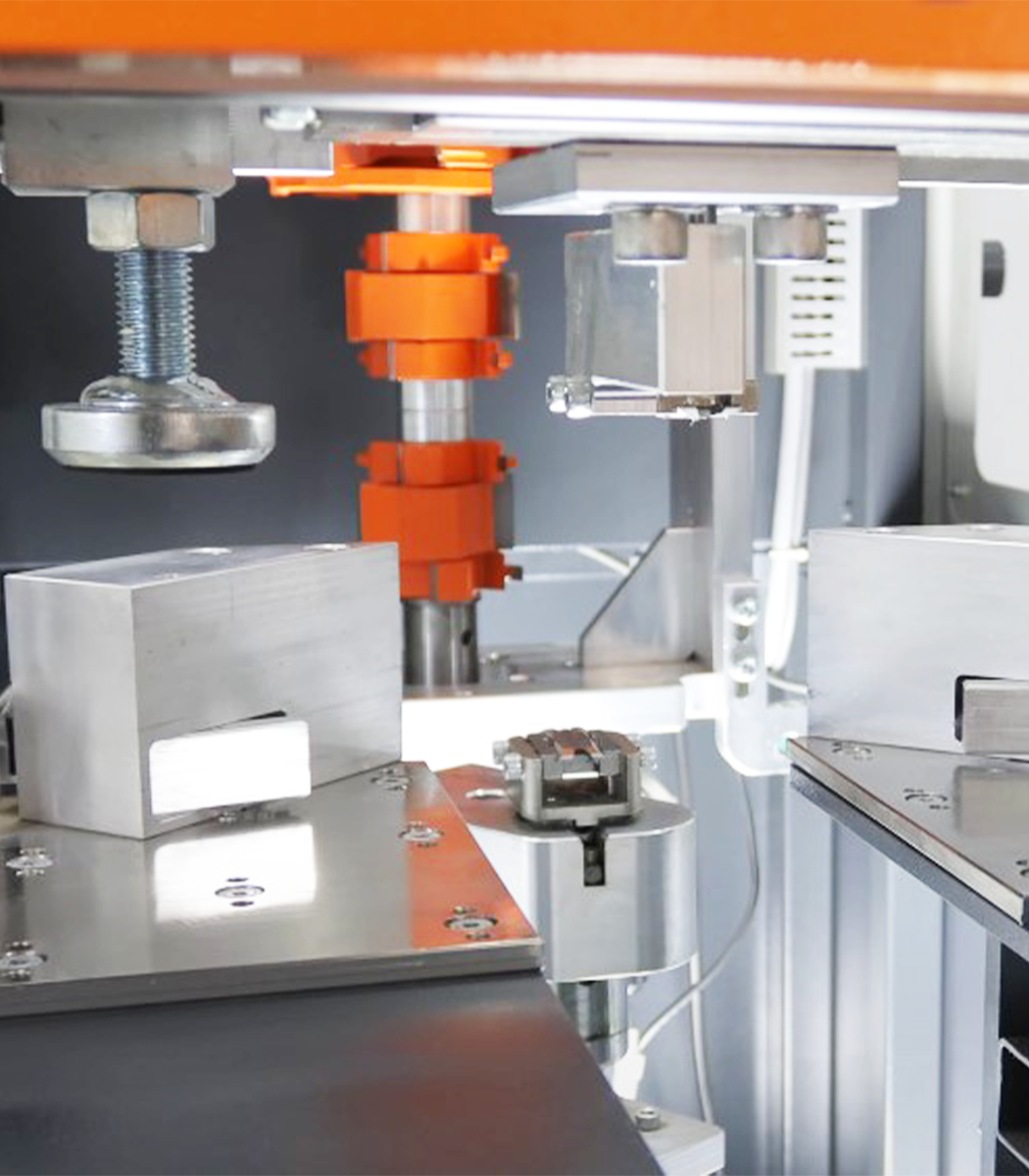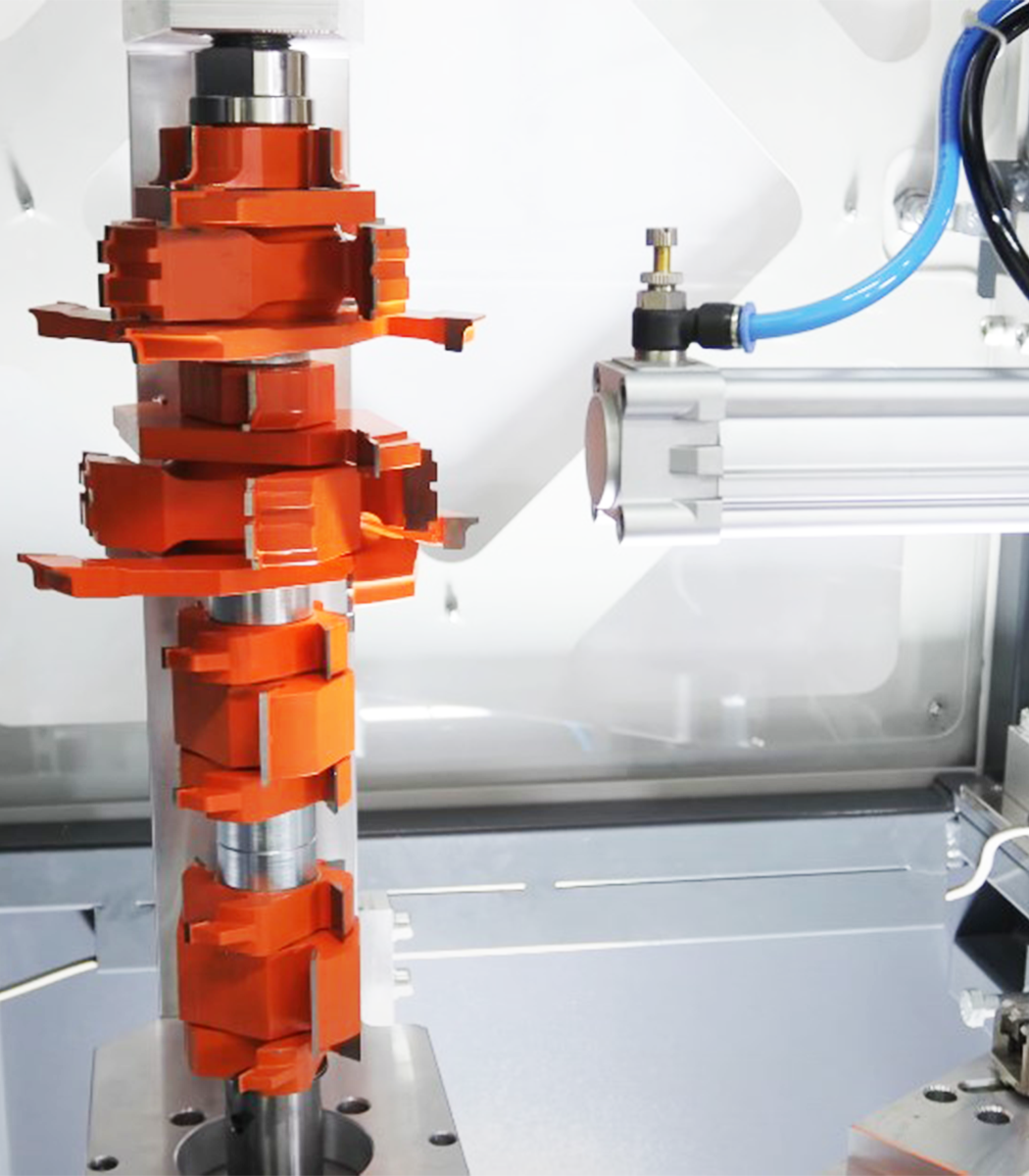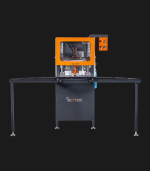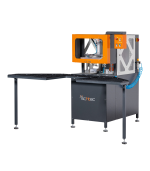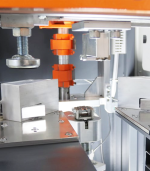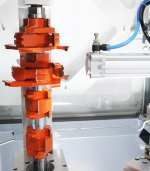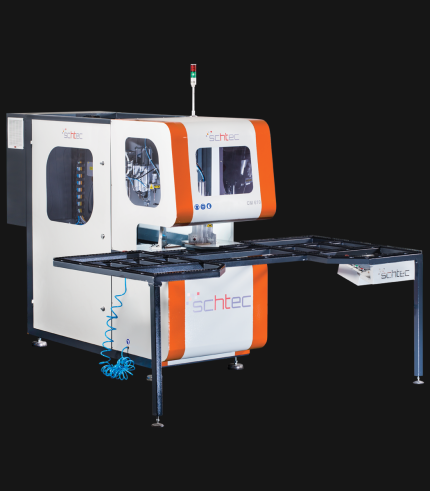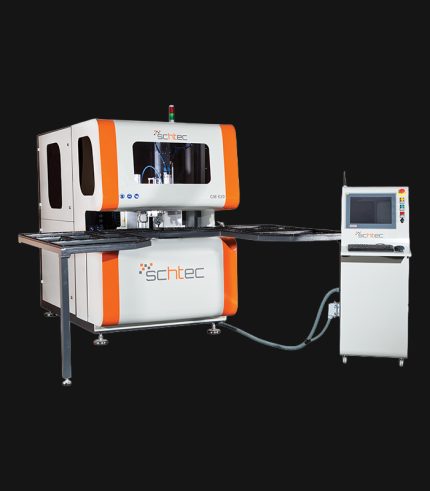CC 254 CNC Corner Cleaning Machine
Schtec CC 254: Economical manual four-cutter PVC corner cleaner for precise burr removal. Auto centering ensures safety. Ideal for small/medium lines.
CC 254 Technical Specifications
| Voltage | 400 V AC, 3 P, 50/60 Hz |
| Total Power | 1.1 kW |
| Spindle Speed | 3,000 rpm |
| Air Pressure | 6–8 bar |
| Air Consumption | 95 lt./min |
| Max. Knife Diameter | 160 mm |
| Max. Profile Width | 120 mm |
| Max. Profile Height | 90 mm |
| Min. Profile Height | 40 mm |
| Machine Height | 1,700 mm |
| Machine Length | 1,360 mm (With Support Table: 2,170 mm) |
| Machine Width | 960 mm (With Support Table: 2,140 mm) |
| Machine Weight | 360 kg |
SKU:
CC-254
Category: Corner Cleaning Machines
Description
Standard Features
- High quality corner cleaning result through durable special knifes on foiled or white welded profiles for bottom and upper surfaces
- High quality corner cleaning result through four different type of end milling tools on outside of the welded profiles
- Corner cleaning stability with automatic centering system for welded frames
- High precision on profile stabilization with vertical clamps
- Support arm is standard equipment
Optional Features
- Corner Cleaning Blades
Product Description
The Schtec CC 254 is a powerful and economical machine designed for manual removal of welding burrs in PVC window and door production. It uses surface scraping blades for top and bottom surfaces and four different notching blades for precise cleaning of outer corners. With automatic centering, vertical clamping pistons, and a standard frame support table, operations are performed safely. With a 1.1 kW motor and up to 120 mm profile width capacity, it is ideal for small and medium-scale production lines.
FAQ
Corner Cleaning Machines
Frequently Asked Questions
Find quick answers to common questions about our Corner Cleaning Machines.
1. What is the purpose of a corner cleaning machine in PVC profile production?
A corner cleaning machine removes the excess welding flash, burrs, and material residues from the welded 90° corners of PVC frames, delivering clean and precise edges. It ensures that frames are ready for sealing, glazing or further finish without manual rework. Proper cleaning avoids interference with gaskets, joints, and hardware, improving product aesthetics and performance. In automated lines, corner cleaning is an essential finishing step to maintain throughput and quality consistency.
2. What features are essential in a high‑performance corner cleaning machine?
Key features include servo‑driven multi‑axis control, automatic knife selection for different profile foils (colour/white), high‑precision centering and clamping systems, tool change mechanisms, and PC‑based control with remote diagnostics. A reliable lubrication system, automatic measurement of profile surfaces, and alarm system further enhance reliability. The machine should support DXF/DWG input or profile program files for flexibility. All these features work together to ensure fast, accurate, and repeatable corner cleaning.
3. How does CM 620 Corner Cleaning Machine perform and which strengths does it bring?
The CM 620 offers high‑speed and high‑accuracy corner cleaning using a 2‑axis servo system. It supports automatic knife selection depending on profile foil (colour or white), improving adaptability. The control is via industrial PC, supporting DXF/DWG import, remote connection (WiFi/Network), and centralized lubrication. It also has features like automatic measurement of profile surfaces and real‑time error reporting through its HMI.
4. What are the advantages and limitations of a simpler machine like CC 254 Four Cutter Corner Cleaning Machine?
The CC 254 uses four cutters to trim weld flash and burrs from frames. It has automatic centering for welded frames, vertical clamps for profile stabilization, and durable special knives suitable for foiled or white profiles. Its simplicity leads to lower cost and easier maintenance, but it may be less flexible in handling diverse profile shapes or foil types compared to CNC models.
5. What maintenance practices help keep corner cleaning machines operating reliably?
Keep cutting knives and bits sharp and free of residue, and inspect them for wear regularly. Clean the clamping and centering systems to prevent debris accumulation that can affect accuracy. Periodically calibrate servo axes, sensors, and measurement systems to maintain precision. Verify lubrication, air supply lines, and system seals, and monitor alarms or fault logs for early signs of drift. Implement preventive maintenance schedules to reduce unplanned stops and maintain product quality.

